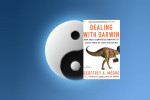Marketing as Strategy

Marketing is uniquely situated to help companies achieve business goals. To do this, the CMO must rise above tactical metrics and the four P’s.
Marketing As Strategy: Understanding the CEO’s Agenda for Driving Growth and Innovation by Nirmalya Kumar
In Marketing As Strategy Nirmalya Kumar exhorts marketers to step up, use marketing as a strategic lever, and move beyond the traditional four P’s. Marketing can no longer rely on 1950’s mass media communication tactics to drive growth.
Kumar lists eight mindset changes for marketers to move from a supporting role to a driving force in the eyes of the CEO. Because “brands, customers and distribution networks are the crown jewels in any company” marketers are well positioned to identify and execute on strategies that result in customer loyalty, revenues, and market share growth.
The examples in the book are largely global retailers (Wal-Mart, Ikea) and multinational brands (IBM, Unilever, Proctor & Gamble). Each chapter contains several useful frameworks for evaluating and selecting marketing strategies. Much of Kumar’s agenda has been taken up by CMO’s since the book was published in 2004, but many of the opportunities he identified remain available today.
The marketer’s challenge
The theme of this book is a common one in business books: a corporate functional area “does not have a seat at the C-suite table” and needs to get aligned with the CEO’s view of the world. Kumar challenges marketers to view marketing as a strategic driver rather than simply a tactical communication vehicle supported by ROI metrics.
The purpose of a company is to create a customer…The only profit center is the customer…The business has two–and only two-functions: marketing and innovation. Marketing and innovation produce results: all the rest are costs.
–Peter Drucker
Marketing as an engine of transformation
If one believes that everyone in the organization should serve the customer and create customer value then obviously everyone must do marketing regardless of job function.
Kumar’s first principle is viewing marketing as a transformative force. Marketers have been locked in to operational roles focused on traditional metrics and have not engaged with broader corporate strategy. He points out that the entire value chain can be thought of as coming under marketing’s purview. To make his point, he notes that if marketing metrics dip, financial metrics will suffer the same fate.
The CEO views customer focus as high priority–this priority plays well with marketing’s capabilities. Kumar points out that traditional marketing activities such as market research, advertising, and promotions are the least important activities possible for marketers.
From market segments to strategic segments
Kumar advocates segmentation based on strategic questions rather than demographics. Customer segments should be examined relative to the value chain required to deliver the product or service. Should marketing be separate for each segment? Distribution? Or both? Should the value chain/network be completely separate to meet the needs of different segments?
Sell solutions, not products
However, as a company attempts to transform itself from a seller of products to a provider of custom solutions, it will observe that many of its strengths, such as a decentralized organization, great technology, strong product divisions, become precisely those things that stop the firm from making an effective transition.
Solution selling is a common recommendation to avoid commoditization. Kumar notes that delivering solutions requires not only a broader understanding of the financial benefit of the solution to the customer but, equally important, a fully aligned and far-reaching delivery system. All elements of the solution must be available and coordinated for the solution to achieve the value the customer requires. Because knowledge is the prime asset for solutions providers, Kumar recommends maintaining a database of customer deployments and lessons learned.
Respond to changing distribution channel dynamics
Kumar warns against continuing to operate and invest in aging and inefficient distribution channels. As incumbents “dither” and evaluate new channel options (should we wait or jump in now?), new entrants employ the available options and wrest market share and profits away. When evaluating channel strategies, consider the channel’s value proposition to your target segments, the target’s demand within the channel, any differentiation associated with the channel, cost structure, value network, competition, potential changes to consumer channel preferences and how the change will affect existing channel participants.
Implement global distribution partnerships
The book provides an extensive example of implementing a partnership for effective retail global distribution. Rather than a combative relationship which pits the unstoppable force of a global supplier against the immovable object of a global retailer, Kumar suggests strategic partnerships that benefit both sides of the table.
Focus on brand rationalization
Of all the intangible assets owned by a company, brands are perhaps the most prized.
Brand management must take center stage in a world with diminishing opportunities for differentiation. Pruning under performing brands allows greater focus and allocation of resources to higher growth segments.
Be a “market-driving” firm
Opportunities for marketing innovation include new business models, business concepts, value propositions, and delivery mechanisms. Kumar points out that all innovation does not need to come from research and develop of new products. He believes that “incrementalism is innovation’s worst enemy.”
Market driving companies are characterized by three attributes:
- They initiate “strategic inflexion points” in the industry which involve disruptive business innovation
- They use visionary rather than traditional market research to inspire their radical ideas
- Instead of learning from existing customers, they teach new customers about their unique value propositions
Shift from strategic business unit marketing to corporate marketing
Ultimately, customers get a bundle of processes, usually the new product development process, the order fulfillment process, and the customer relationship management process. Managers must align the apparently contradictory logic of these main processes to deliver value curves to the valued customers.
Marketing must address three key issues to move from local, business unit marketing, to corporate marketing:
- Portfolio choices – what business should we be in?
- Portfolio relationships – what value should our businesses add to each other?
- Central services – what role should the corporate center play with respect to business units?
Kumar concludes the book by acknowledging the level of change required to transform marketing within the organization. With that in mind, he lays out several change management frameworks which identify roles and strategies for executive leaders.
In the video below, Kumar gives a TEDx talk that asks “where are the Indian Googles, iPads, and Viagras?” His answer: invisible innovation.
[ted id=1489]
Marketing As Strategy: Understanding the CEO’s Agenda for Driving Growth and Innovation






